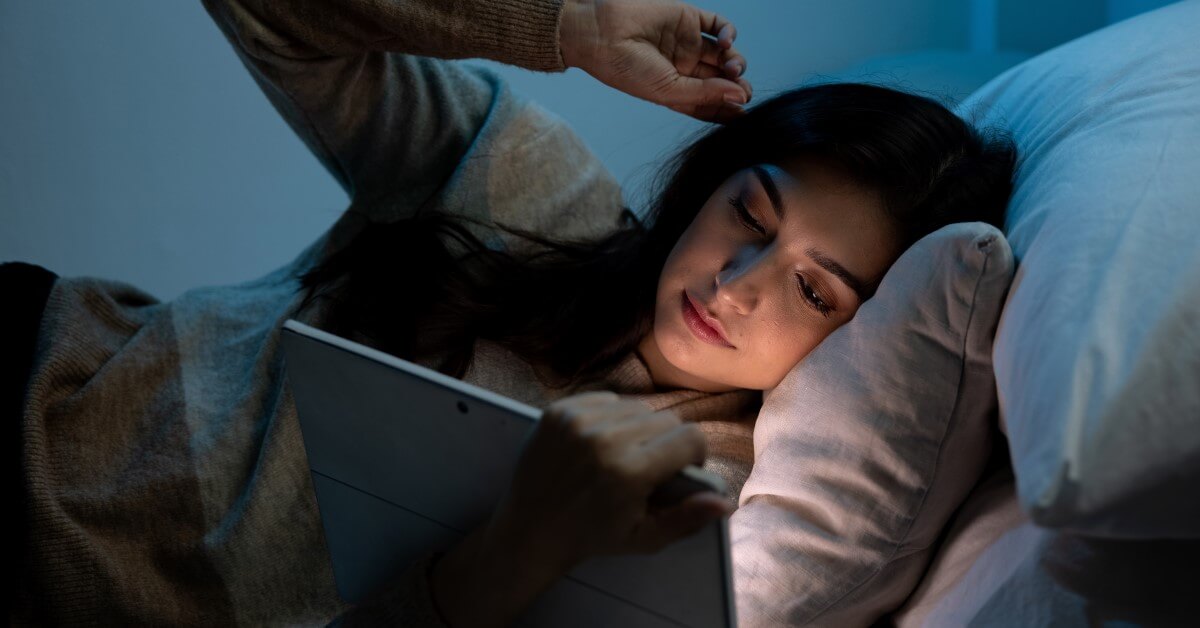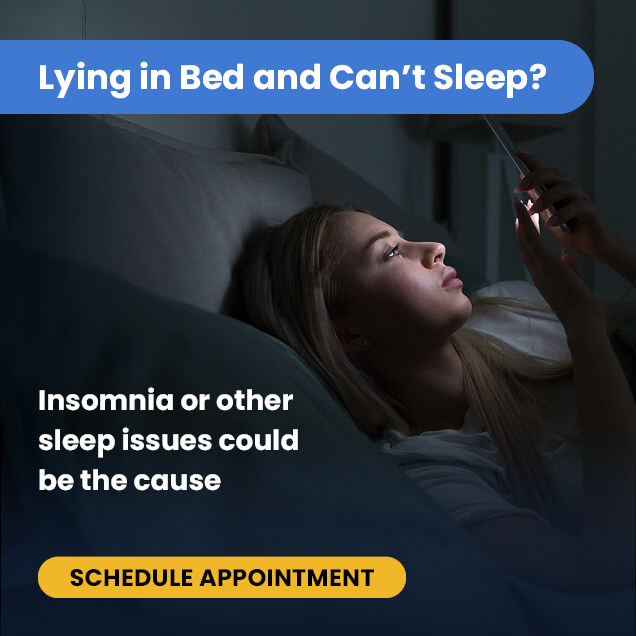What Is Chronodisruption? | What Causes Changes In Sleeping Patterns? |
How Does Light Cause Chronodisruption? | Does Chronodisruption Affect Health? |
Can We Reset Circadian Rhythm?
Overview
Modern devices, such as smartphones, laptops, and tablets, have become an indispensable part of our lives. However, many people are unaware of the negative impact those light-emitting devices can have on their sleep and overall health.
Your body’s circadian rhythm and sleep-wake cycles respond to light. Exposure to light during the night makes it harder to fall asleep and can lead to the chronodisruption of your circadian rhythm.
Chronodisruption doesn’t only change your sleep patterns. It also increases the risk of serious health conditions, such as cardiovascular diseases, certain types of cancer, metabolic disorders, and even cognitive impairment.
Continue reading to learn more about chronodisruption, how light causes it, and how to reset your sleep-wake cycle.
What Is Chronodisruption?
Chronodisruption is the chronic disruption of circadian rhythms and can increase the risk of various diseases.[1]
Circadian rhythms are the 24-hour biological cycles that allow us to adapt to environmental changes around us physically, mentally, and behaviorally.[2]
Our circadian rhythms are affected by light and darkness, allowing us to adapt to the daily changes from light time to nighttime. That’s why we usually wake up during the day and sleep during the night.
However, some lifestyle factors, such as exposure to artificial light at night and shift work, can disrupt the synchronization between our biological rhythm and body functions.
This chronodisruption of our circadian rhythm can decrease our overall sleeping time and lead to serious health consequences.[1]
What Causes Changes In Sleeping Patterns?
Getting enough sleep is crucial for good health. Not getting enough good quality sleep increases the risk of many diseases and can negatively affect your physical and mental health.[3]
The amount of sleep each person needs varies with age, gender, general health, and sleep quality. Experts recommend between 7-9 hours of sleep for healthy adults.[4]
However, social, cultural, and technological factors affect people’s sleeping habits. One example is artificial light. The generalization of artificial light has caused significant changes in sleep patterns.
Researchers suggest that today, we sleep at least an hour less each night than people did a century ago due to our exposure to artificial light and screens before bedtime.[5]
Nowadays, almost everything happens on social media. You’ll find advertisements, marketing strategies, promotions, offers, sales, creative content, and tutorials for pretty much anything. Additionally, more and more companies are becoming dependent on social media for networking, advertising, and promoting their services.
That has created a dependency on electronic devices, which give us access to all this feed and information. The more social media content is relevant to our everyday lives, the more time we spend staring at a screen.
A new social phenomenon, known as the fear of missing out (FOMO), has emerged with the introduction of social media platforms, such as Facebook, Twitter, Instagram, Snapchat, and TikTok.[6]
Many people feel the compulsive need to check social media apps to stay connected to what others are doing in the hopes of maintaining social ties. That can lead to individuals spending hours in bed before sleep scrolling through different social networking sites, watching viral reels, and trying to keep up with all the new trends and stay in the know.
The amount of time spent behind screens became intensified during the height of the coronavirus pandemic. People were locked in their homes with more free time than usual, and the only way to stay connected to others without being able to see them was through social media.
Also, remote working became more popular and many people still worked from home even after the threat of Covid died down. People unaccustomed to working from home faced productivity challenges, frequently requiring them to work for longer hours into the night to keep up with the workload.[7]
All this social and cultural shift has increased our exposure to bright light from electronic devices during the night hours and, therefore, shifted our sleep habits.
How Does Light Cause Chronodisruption?
Our brains receive light input through a pathway through the eye’s retina. The changes in the light in our environment affect our body functions, such as resting when it’s dark and being more active and awake when there’s light around us.[2]
Exposure to various light intensities at different times of the day determines the chronobiological effects on your circadian rhythms.
During the daytime, the light reaching our retinas is more intense. The photoreceptors inside the retina carry this light message to the brain. As a result, the brain suppresses the production of melatonin (the sleeping hormone) and causes a shift in our circadian cycles, instructing our bodies to feel alert and awake.
Alternatively, as the night approaches, we’re exposed to lesser light intensity, and our bodies prepare for rest and sleep.
Over the years, artificial light has changed how much we receive during the night. Nowadays, people spend a lot of time on their smartphones, tablets, or laptops at night, even right before they fall asleep.
As these technologies have become more widespread, we’re becoming more and more exposed to bright artificial light during the evenings and nights. Light exposure at night reduces melatonin production and disrupts the circadian rhythm. Hence, people fall asleep at later hours and for a shorter amount of time.[8]
When this happens repeatedly, it results in the chronodisruption of the circadian rhythm and chronic sleep deficiency.
Does Chronodisruption Affect Health?
Not getting adequate sleep doesn’t only make you feel tired or cranky the next day. It can have long-term negative health consequences.
When you sleep, the brain reorganizes and recharges. Your body repairs cells and eliminates toxic waste accumulated during the day.[9]
Chronodisruption because of light exposure at night reduces the total sleep time and prevents the body from adequately resting and regenerating.
Researchers suggest that prolonged exposure to light at night increases the risk of several diseases, including [10]
● Cancer
● Sleep disturbances
● Mood disorders
● Metabolic dysfunction
● Cognitive impairments
In 2009, an epidemiological study found a link between the incidence of breast cancer and exposure to light at night during shift work.[11] In another study, researchers were able to link nighttime exposure to light with depression.[12]
Moreover, a population-based study of 27,485 individuals revealed that exposure to excessive light during the night increases the risk of cardiovascular disease (CVD).[13]
People who worked night shifts had a higher risk of obesity, high triglycerides, and low concentrations of HDL cholesterol, all of which are risk factors for CVD.
Chronodisruption from exposure to light at night can also cause cognitive impairment. A study published in 2001 demonstrated that long-term disturbance of a person’s light-dark cycle causes learning and memory problems.[14]
Can We Reset Circadian Rhythm?
The short answer is yes. There are ways by which you can reset your body’s 24-hour internal clock and improve your sleep-wake cycle.
Resetting your circadian rhythm is possible by practicing good sleep and light hygiene.
Here are some tips that can help you sleep faster and better and avoid the chronodisruption of your biological clock:
● Lower Light Intensity Before Sleep: At least two hours before bedtime, lower the light intensity in your environment. Dim the lights in your room and avoid being in excessively bright places. That helps your body wind down and produce enough melatonin to fall asleep.
● Limit Screen Time: Avoid watching TV or using your smartphone, laptop, or tablet for at least 30-60 minutes before going to sleep. Artificial light from those screens disrupts your circadian rhythm and decreases melatonin production.
● Use Blue-Light Filter: Exposure to blue light from electronic devices affects when our bodies produce melatonin and can change our sleeping patterns. Blue light filters or glasses can improve sleep quality and duration.
● Night Mode: You can improve your sleep cycle by setting your devices to night or dark mode. Night or dark mode lessens the amount of light emitted by your devices. That helps reduce eyestrain and your exposure to blue light.
● Avoid Alcohol and Caffeine: In addition to light at night, caffeine and alcohol can affect your circadian rhythm and cause poor sleep.
● Go to Bed a Little Earlier Every Night: If you’re having trouble falling asleep early, gradually move your bedtime each week. For example, if you’re going to bed at 1 a.m, try going to bed half an hour earlier at 12:30 a.m the first week. In the second week, focus on getting to bed at midnight instead. That will give your body enough time to adapt to your new sleeping time.
Good sleep is one of the pillars of health and should be a priority. The light-dark cycle has a powerful effect on our biological clock and sleep quality. Excessive exposure to artificial light, especially at night, can cause chronodisruption, which can be as damaging to health as smoking cigarettes.
References:
- Sati L. Chronodisruption: effects on reproduction, transgenerational health of offspring and epigenome. Reproduction. 2020;160(5):R79-R94. doi:10.1530/REP-20-0298
- von Gall C. The Effects of Light and the Circadian System on Rhythmic Brain Function. Int J Mol Sci. 2022;23(5):2778. doi:10.3390/ijms23052778
- Medic G, Wille M, Hemels ME. Short- and long-term health consequences of sleep disruption. Nat Sci Sleep. 2017;9:151-161. doi:10.2147/NSS.S134864
- Hirshkowitz M, Whiton K, Albert SM, et al. National Sleep Foundation’s sleep time duration recommendations: methodology and results summary. Sleep Health. 2015;1(1):40-43. doi:10.1016/j.sleh.2014.12.010
- Flaskerud JH. The Cultures of Sleep. Issues Ment Health Nurs. 2015;36(12):1013-1016. doi:10.3109/01612840.2014.978960
- Gupta M, Sharma A. Fear of missing out: A brief overview of the origin, theoretical underpinnings, and relationship with mental health. World J Clin Cases. 2021;9(19):4881-4889. doi:10.12998/wjcc.v9.i19.4881
- Hernandez T, Abigail Y. Remote Workers During the COVID-19 Lockdown. What Are We Missing and Why Is It Important? J Occup Environ Med. 2020;62(11):e669. doi:10.1097/JOM.0000000000002018
- Reiter RJ, Tan DX, Korkmaz A, et al. light at night, chronodisruption, melatonin suppression, and cancer risk: a review. Crit Rev Oncog. 2007;13(4):303-328. doi:10.1615/critrevoncog.v13.i4.30
- Eugene AR, Masiak J. The Neuroprotective Aspects of Sleep. MEDtube Sci. 2015;3(1):35-40.
- Effects of Light at Night on Circadian Clocks and Metabolism | Endocrine Reviews | Oxford Academic. Accessed November 8, 2022. https://academic.oup.com/edrv/article/35/4/648/2354673
- Stevens, R. (2009, April 20). Light-at-night, circadian disruption and breast cancer: assessment of existing evidence . Academic.oup.com. Retrieved November 11, 2022, from https://academic.oup.com/ije/article/38/4/963/851153
- Bedrosian, T. A., & Nelson, R. J. (2013). Influence of the modern light environment on mood. Molecular psychiatry, 18(7), 751–757. https://doi.org/10.1038/mp.2013.70
- Karlsson, B., Knutsson, A., & Lindahl, B. (2001). Is there an association between shift work and having a metabolic syndrome? Results from a population based study of 27,485 people. Occupational and environmental medicine, 58(11), 747–752. https://doi.org/10.1136/oem.58.11.747
- Cho, K. Chronic’ jet lag’ produces temporal lobe atrophy and spatial cognitive deficits. Nat Neurosci 4, 567–568 (2001). https://doi.org/10.1038/88384.






